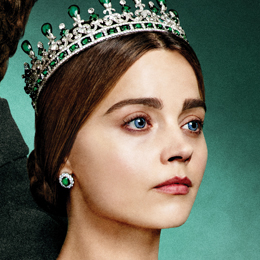History in Images: Victoria Episode 1
It’s 1848 and Queen Victoria is pregnant with her 6th child, but her burgeoning belly is the least of her worries. Revolution abroad and unrest at home, coupled with new houseguests, and a confrontational Foreign Minister bring new challenges for the Queen. Learn some of the real history behind this fascinating time in Victoria’s reign.
- 1.
Paris 1848

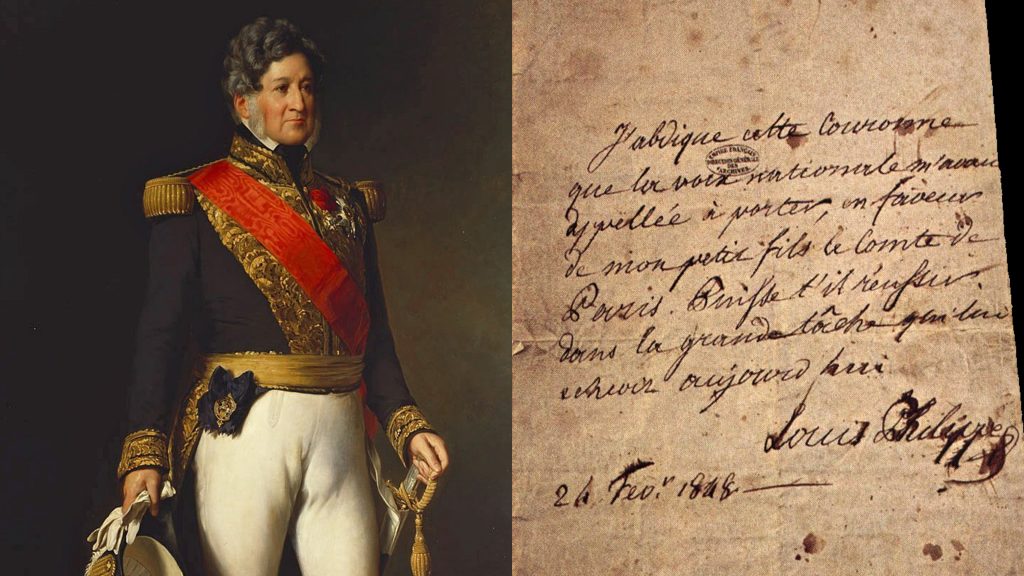
left: King Louis Philippe I of France | right: The Abdication of Louis Philippe (left: King Louis Philippe I of France | right: The Abdication of Louis Philippe)
Episode 1 of Season 3 opens with the King of France, Louis Philippe I, fleeing Paris in fear for his life.
On February 24th, 1848, violent demonstrations broke out in Paris as a result of escalating public resentment over such issues as corruption, suffrage, unemployment, and rising food costs.
The encroaching hostile mobs left King Louis Philippe no choice but to write a hurried abdication letter (pictured) and escape, in disguise, to England. His overthrow and the instabilities in France reverberated across Europe, sparking further insurrections. Louis Philippe remained in exile in England until his death in 1850.
- 2.
The Chartist Movement in England


Left: A Poster advertising the Great Chartist Meeting | Right: Photograph of the Great Chartist Meeting on Kennington Common, London in 1848 (Left: A Poster advertising the Great Chartist Meeting | Right: Photograph of the Great Chartist Meeting on Kennington Common, London in 1848)
Episode 1 sees Queen Victoria facing growing unrest on her own turf as Chartism, a working class movement, gains momentum.
The Chartists, as they were known, established a national protest movement, after the 1837-38 economic depression in England. Fueled by high unemployment, poverty, and political injustices, a group of working people mobilized to petition for parliamentary reform. They drafted a Charter with six demands:
Universal manhood suffrage
Secret ballot voting
Parliamentary elections every year (as opposed to every 5 years)
Equal size constituencies
Payment for members of parliament
Abolishing the property qualifications for becoming an MP. - 3.
Princess Feodora of Hohenlohe-Langenburg

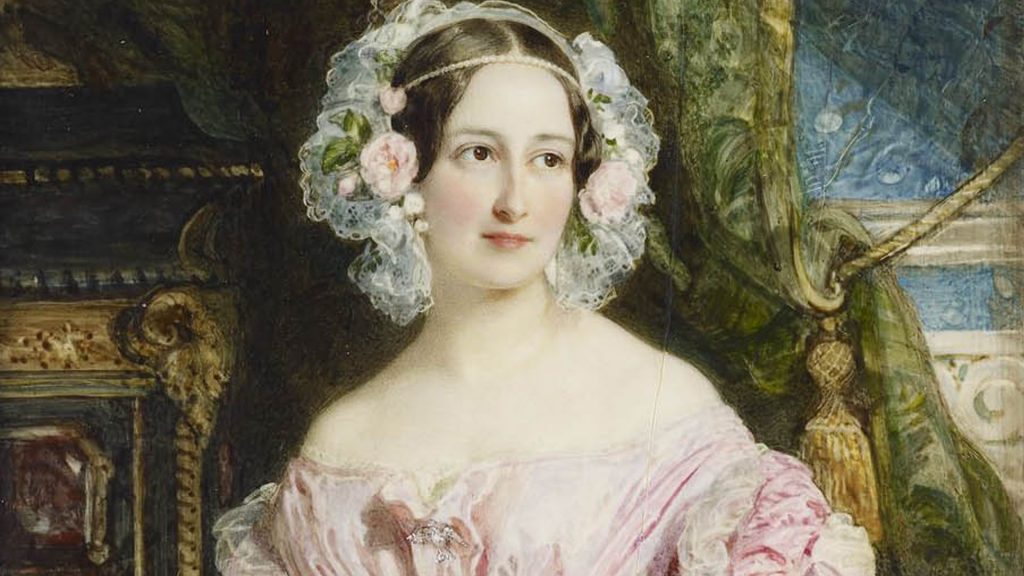
Princess Feodora of Hohenlohe-Langenburg by Sir William Ross (Princess Feodora of Hohenlohe-Langenburg by Sir William Ross)
Queen Victoria’s half-sister, Princess Feodora, makes a surprise arrival at Buckingham Palace during Episode 1, with the claim that she’s fleeing hostilities in her homeland of Germany.
Anna Feodora Auguste Charlotte Wilhelmine, born in 1807, was the product of Victoria’s mother Princess Victoria of Saxe-Coburg-Saalfeld’s first marriage to Emich Carl, Prince of Leiningen. (Victoria also had a half brother, Carl, 3rd Prince of Leiningen.) Despite being twelve years older than Victoria, Feodora was close to her younger sibling while they lived at Kensington Palace. Feodora left to marry Ernst I, Prince of Hohenlohe-Langenburg, when Victoria was just nine years old. In Germany, Feodora had six children with her husband. She and Victoria exchanged letters and visited one another throughout their lives.
- 4.
Henry John Temple, 3rd Viscount Palmerston

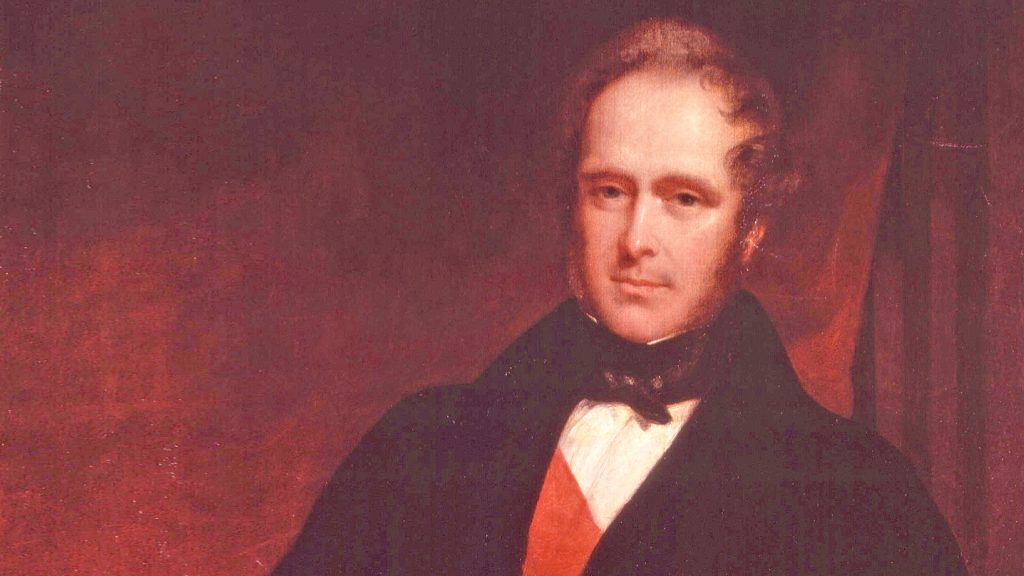
Henry John Temple, 3rd Viscount Palmerston, by John Partridge (Henry John Temple, 3rd Viscount Palmerston, by John Partridge)
Victoria Season 3 introduces Lord Palmerston, Foreign Secretary to Prime Minister John Russell. Henry John Temple, 3rd Viscount Palmerston, was Britain’s Foreign Secretary from 1830–4, 1835–41, and 1846–51. During his time in office, he wooed the British populace with his nationalistic proclamations and skillful handling of the press, earning himself the affectionate nickname of “Pam.”
- 5.
Boxing in Britain

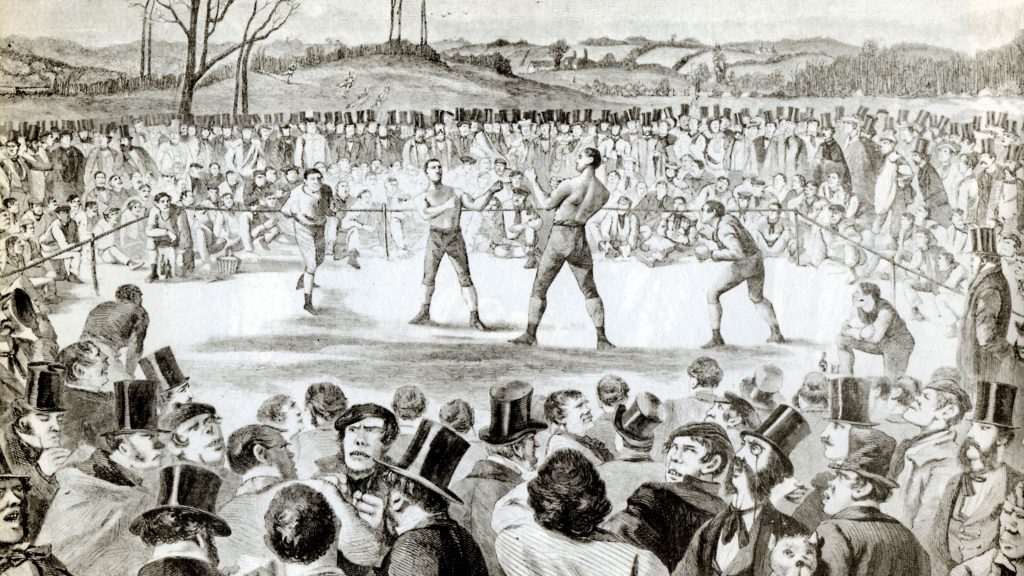
Tom Sayers v John Heenan, England v USA, at Farnborough 17 April 1860 for the World Heavyweight title (Tom Sayers v John Heenan, England v USA, at Farnborough 17 April 1860 for the World Heavyweight title)
On a carriage ride through the park, Victoria witnesses a rowdy crowd cheering for a boxing match. Illegal since the Roman Empire, the sport of boxing had crept back into 17th century Britain, and was soon rapidly growing in popularity. Fist fighting was initially an upper class pastime, and King George I was known to be an enthusiast; he even opened a boxing ring in Hyde park. However, even though bouts could draw large crowds and celebrity fighters, boxing was largely regarded as a disreputable pursuit whose participants risked arrest.
Matches were bare-knuckle, often vicious affairs that had less to do with expertise than with muscle and brute force. In 1867, some well-needed guidelines were brought to the sport with the Queensbury Rules and a mandated use of boxing gloves, lending boxing greater respectability, and solidifying its place in the world of sports.








